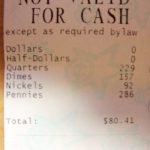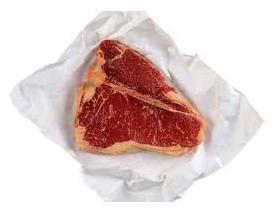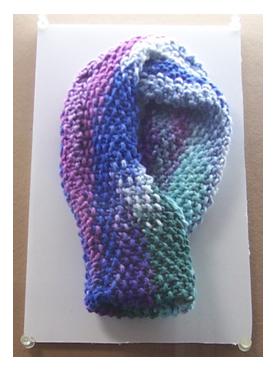And a jump-discontinuity, at that! I enjoy the jagged curves formed by cracking snow, where each turn is the product of some determinism and some randomness.
 A Japanese man has set a new world record by computing 5 trillion digits of pi.
A Japanese man has set a new world record by computing 5 trillion digits of pi.
http://www.reuters.com/article/idUSTRE70J7S220110120
Apparently Shigeru Kondo accomplished this feat using a home-built computer that worked non-stop for 90 days. Apart from this dramatic triumph for mathematical hobbyists (Kondo is a systems analyst for a food company), the article contains the following two excellent lines:
“Calculating a more accurate pi, which is believed to go on forever, has been a challenge for scholars for thousands of years.” Believed to go on forever? Is the reporter some kind of mathematical agnostic?
And this, from Kondo himself: “I really want to praise my computer, which calculated continuously for three months without complaint.” Credit where credit is due, I suppose.
It is interesting to note that, while 5 trillion is indeed the new record for consecutive digits of pi, researchers at Yahoo were able to compute digits that are much farther out than that; they just don’t know all the digits that lead up to it!
 Here’s the answer to the Piggy Bank Challenge!
Here’s the answer to the Piggy Bank Challenge!
Coinstar was nice enough to provide all the data I needed after it consumed my coins. As you can see, there was $80.41 in the Piggy Bank. The coinage consisted of 286 pennies, 92 nickels, 157 dimes, and 229 quarters.
Let’s take a quick look at some interesting strategies involving using the weight of the Piggy Bank to make an educated guess as to the total value. I’ve made some general remarks about reader guesses in a separate post.
As previously mentioned, the weight of the full Piggy Bank was about 2996 grams. Using the weights of individual coins, we can set up this linear equation:
where P, N, D, and Q are variables representing the number of pennies, nickels, dimes, and quarters, and each coefficient is the weight of that coin in grams.
This equation has several uses. First, you can try to establish some bounds for the value of the Piggy Bank by considering extreme cases. What if all the coins were quarters? What if they were all pennies? These cases would likely produce the maximum and minimum possible value of the Piggy Bank (is that obvious?).
Or, if you had some idea about how the coins were distributed, you could use this equation to estimate the total value of the Piggy Bank. One place to start might be assuming that there are equal numbers of each kind of coin. What other distributions might be used?
 Through Math for America, I am part of an on-going collaboration with the New York Times Learning Network. My latest contribution, a Test Yourself quiz-question, can be found here:
Through Math for America, I am part of an on-going collaboration with the New York Times Learning Network. My latest contribution, a Test Yourself quiz-question, can be found here:
http://learning.blogs.nytimes.com/2011/01/24/test-yourself-math-jan-24-2011/
This problem is based on the recent Times Infographic America By The Numbers, which displaye a selection of U.S. Census-related data. My question deals with how much red meat Americans consume per year.
 On the face of it, it’s hard to imagine two things as unrelated as mathematics and knitting. And yet, here we have a website devoted to mathematical knitting:
On the face of it, it’s hard to imagine two things as unrelated as mathematics and knitting. And yet, here we have a website devoted to mathematical knitting:
http://www.toroidalsnark.net/mathknit.html
A Klein-bottle hat (seen at right)? A Mobius scarf? Ingenious stuff, and a testament to our unlimited creativity and resourcefulness, if not our practicality.
The Klein bottle hat actually reminds me of the Klein bottle one of my students made out of plaster.